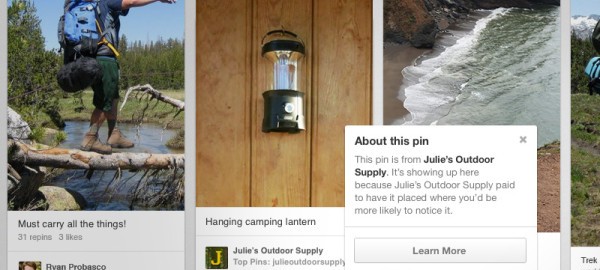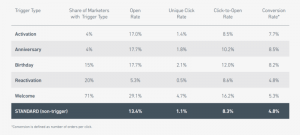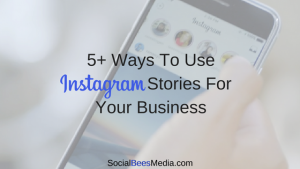Following a successful preliminary launch, Pinterest’s Promoted Pins Program is now available to any advertiser looking to gain exposure in a relatively new advertising venture on social media. With 70 million Pinterest users globally, success for the program looks to be a promising addition for brands who want to increase their visibility and sales.
What We Know So Far
In its beta version, the new paid program performed extremely well – with an average earned media increase of 30%. Some of the most interesting findings from the beta release were:
Promoted pins performed just as well as organic pins — and in some instances even better. On average, a Pinterest pin is repinned 11 times. Promoted pins often exceeded this average – bringing added exposure for brands and more opportunities to generate sales.
Promoted pins perform long after a campaign ends. Once Promoted Pins are repinned, traction continues on the image even after the core advertising period is complete. Pinterest reported an extra 5% bump in earned media for pins during the month that followed a promoted campaign.
Brands across various industries find success through Promoted Pins. Aside from the common fashion and beauty brands that have established brand presences on Pinterest, companies in the auto industry, financial industry, and a wide variety of other industries, such as Target, Nestle, and Ziploc have found strong results from their advertising efforts through the program. There is lots of opportunity and relatively low competition in this new program.
How Promoted Pins Works
Just like Google’s Adwords, the Promoted Pins Program operates on a cost-per-click basis. Advertisers can set a maximum dollar amount they would like to pay if users decide to re-pin their promoted pin, while the number of impressions each pin garners remains free – if a user doesn’t choose to re-pin the content, the brand isn’t charged. For businesses with a limited advertising budget, this program will ensure that their spending is used efficiently and only spent when truly reaching their target audience. Unlike a cost-per-click, this cost-per-re-pin model ensures that engagement goes beyond a simple click and actually helps to foster brand advocacy and better long term engagement at an individual user level.
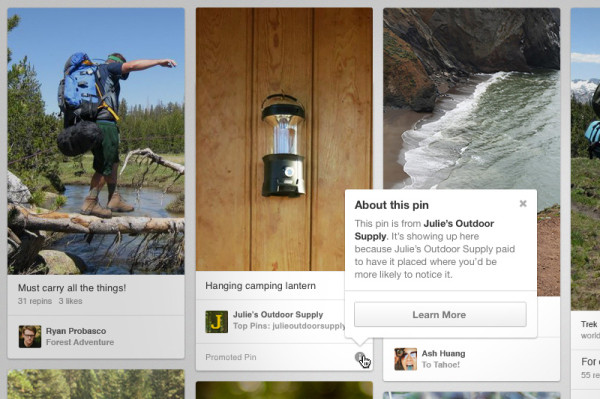 Image courtesy of Marketingland.
Image courtesy of Marketingland.
Similar to other platforms like Facebook or LinkedIn, the program is expected to provide advertisers with advanced targeting options and multiple ad formats to reach their target audience. Someone who actively uses Pinterest for inspiration for a specific topic may find relevant promoted pins appearing on their feed.
As more companies begin to promote pins, keywords will be used and volume can be guessed based on tools like Google’s Keyword Planner. However, Pinterest users search differently than the average user does on Google, simply because of the nature of the platform, so some research is necessary into what Pinterest users search for – and until they provide their own keyword tools this will have to be done manually. A good workaround to begin is for advertisers can use the Pinterest analytics dashboard to get a better idea as to what is getting the most engagement, and what is working and what isn’t, and then optimizing their promoted pin campaigns accordingly.
What Users Think
So far user attitude towards the program has been favorable. According to eMarketer, less than a third of Pinterest users answered that they “couldn’t stand promoted pins.” Of those who had a negative attitude towards the pins, most of them felt strongly against them simply because they didn’t like advertisements.
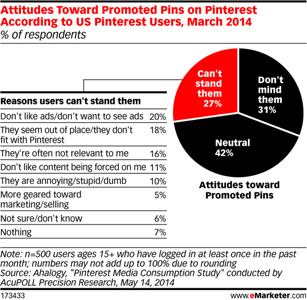
Like other social media outlets and advertisements, steps have been taken by Pinterest to try help address this issue. There are certain rules that must be followed when engaging in promoted pins regarding deceptive claims, promotional information and calls-to-action, as Pinterest is extremely careful to enhance the user experience with their paid program, not create a place where users are bombarded with misleading advertisements.
How Brands Can Get Started With Promoted Pins
Pinterest’s organic reach has already brought relevant traffic sources to many brand websites, resulting in strong sales, increased brand awareness and overall growth. In fact, according to eCommerce Quarterly, Pinterest has the highest average ecommerce order value ($ 105.83) of any social network’s referral traffic – only behind Polyvore and Instagram, and beating out the likes of Facebook, Twitter, and LinkedIn. It stands to reason that the promoted pins program will help to build upon this organic success, and should be a no-brainer for businesses that are already experiencing great results from their Pinterest marketing efforts.
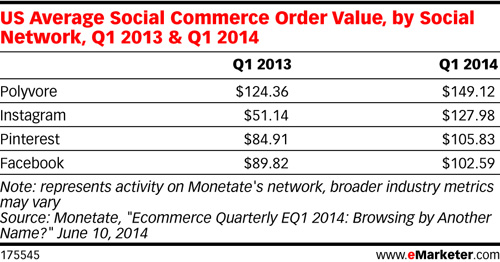 Companies wanting to learn more about Promoted Pins can visit Pinstitute, an offering of workshops and webinars designed to educate advertisers on how to best leverage the program to support their brand’s initiatives. Those involved will learn the type of pins that typically return the most success, what the average Pinner cares about, and other topics related to the core tracks of creative and measurement. For small businesses that are interested in adding Promoted Pins to their digital marketing repertoire, webinars and online tools specifically aimed at brands with smaller marketing budgets will be available as well.
Companies wanting to learn more about Promoted Pins can visit Pinstitute, an offering of workshops and webinars designed to educate advertisers on how to best leverage the program to support their brand’s initiatives. Those involved will learn the type of pins that typically return the most success, what the average Pinner cares about, and other topics related to the core tracks of creative and measurement. For small businesses that are interested in adding Promoted Pins to their digital marketing repertoire, webinars and online tools specifically aimed at brands with smaller marketing budgets will be available as well.
Will your business be giving a promoted pins a shot? Let us know why or why not in the comments below.
(259)
